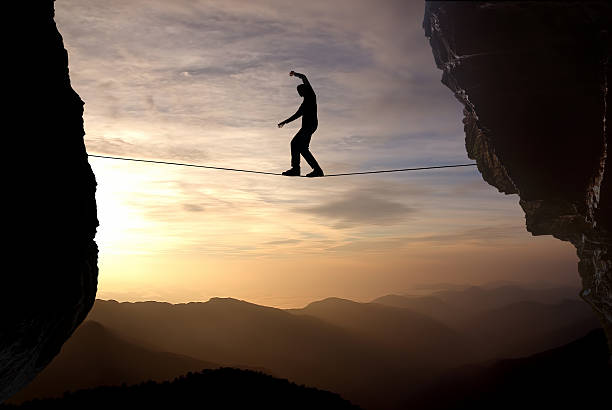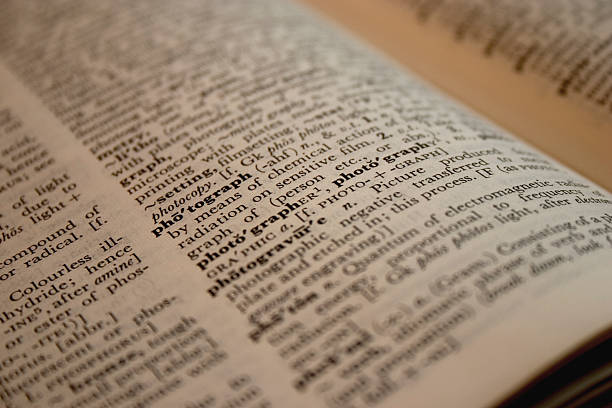How To Describe A Brave Person In Writing (11 Best Ways)
In the realm of literature and storytelling, the portrayal of brave characters is a tapestry woven with the finest threads of character development, vivid descriptions, and emotional depth.
The ability to convey bravery in the written word is not just an art; it’s a captivating alchemy that captivates readers and stirs their emotions.
Whether the hero charges into a dragon’s lair, stands up against oppression, or faces personal demons, the task of describing a brave person in writing transcends mere words; it’s a compelling invitation to readers to explore the complexities of courage, resilience, and the indomitable human spirit.
In this exploration, we will delve into the multifaceted aspects of crafting brave characters, from their physical descriptions to their inner motivations, and explore how their stories become powerful mirrors of our own aspirations, fears, and journeys.
So, prepare to embark on a literary odyssey, as we navigate the art of describing bravery in its many extraordinary forms, and invite readers to step into the shoes of courageous souls who breathe life into the pages of our stories.
How To Describe A Brave Person In Writing
To describe a brave person in writing, follow these steps:
Identify the individual
Start by introducing the person you want to describe. Provide some basic information about them, such as their name and any relevant background information.
Define bravery
Before delving into the person’s brave qualities, briefly define what bravery means to you or in the context of your writing. It could be facing fear, taking risks, or showing courage in challenging situations.
Highlight specific actions or behaviors
Describe the specific actions or behaviors that demonstrate the person’s bravery. These could be instances where they faced danger, overcame obstacles, or stood up for what they believe in. Use vivid and concrete examples to make your description more compelling.
Emphasize their courage
Explain how the person displayed courage in these situations. This could involve showing determination, resilience, or a willingness to confront fear or adversity. Use descriptive language to convey their mental and emotional strength.
Provide context
Offer context to help the reader understand the significance of the person’s bravery. Explain why the situations they faced were challenging or why their actions were particularly courageous.
Discuss the impact
Describe the impact of the person’s brave actions, both on themselves and on others. How did their courage inspire or help those around them? What positive changes or outcomes resulted from their bravery?
Highlight character traits
Identify character traits that are associated with bravery, such as integrity, selflessness, and determination. Show how these traits are evident in the person’s actions and decisions.
Use descriptive language
Use descriptive and evocative language to paint a vivid picture of the person’s bravery. Use adjectives, metaphors, and similes to create a strong and emotional image in the reader’s mind.
Offer a personal perspective
Share your personal perspective on the person’s bravery. Explain why you admire or respect their courage and how it has affected you or your view of them.
Conclude with a summary
Wrap up your description by summarizing the key points you’ve made about the brave person. Reiterate their name and the qualities that make them brave, leaving a lasting impression on the reader.
Edit and revise
Review your writing for clarity, coherence, and grammar. Make sure your description flows smoothly and effectively conveys the person’s bravery.
By following these steps, you can create a well-crafted and engaging description of a brave person in your writing.

Understanding Bravery
Understanding bravery is like peeling back the layers of a complex, ever-shifting tapestry of the human spirit. It’s not just the bold charge into the unknown or the fearless confrontation of danger.
It’s the quiet resilience of a single parent working two jobs to provide for their children, the unwavering resolve of a scientist pushing the boundaries of knowledge, or the simple act of speaking out against injustice in a world that often prefers silence.
Bravery is the alchemy that transforms ordinary individuals into extraordinary heroes, whether they wear capes or aprons, lab coats or uniforms.
It’s a testament to the indomitable strength that resides within us all, waiting for the right moment to emerge and ignite the world with its fearless light.
Definition of bravery
Bravery, at its core, is the unwavering willingness to confront fear, adversity, or danger in the pursuit of a greater good or a deeply held conviction.
It transcends mere courage, extending into the realm of moral and emotional fortitude. It’s about summoning the inner strength to stand up when others might back down, to act when hesitation seems more reasonable, and to persevere even when the odds are stacked against you.
Bravery can manifest in various forms, whether it’s a soldier’s fearless charge into battle, a whistleblower’s courageous disclosure of wrongdoing, or a person facing personal demons head-on. It’s the embodiment of human resilience and the embodiment of the human spirit’s triumph over the shadows of doubt and fear.
Elements of Descriptive Writing
Descriptive writing is like a painter’s palette of words, where every hue and stroke weaves a vivid tapestry in the reader’s mind.
It’s the symphony of senses, a dance of metaphors, and the whisper of evocative vocabulary that breathes life into the barren canvas of prose.
Each word becomes a brushstroke, each sentence a masterpiece, as the writer molds ordinary words into a living, breathing world.
It’s the literary alchemy that transforms mere text into an immersive experience, inviting readers to not just read, but to see, hear, touch, taste, and smell the very essence of the story.
Descriptive writing is the portal to another reality, where words are the keys, and the writer is the enchanter, casting spells that transport readers to realms limited only by their imagination.
Sensory imagery
Sensory imagery is the magic wand of writing, enchanting the reader’s mind with a symphony of sensations. It’s the art of painting with words, where every paragraph becomes a canvas, and every sentence a brushstroke, designed to invoke the five senses.
With sensory imagery, you can make the reader taste the sweetness of a ripe, sun-kissed peach, feel the warm embrace of a summer breeze, hear the distant echoes of laughter, see the vivid colors of a bustling marketplace, and even smell the tantalizing aroma of freshly baked bread.
It’s the literary sorcery that transforms a mere story into a visceral experience, allowing readers to not just envision the narrative but to fully immerse themselves in its world, as if they could reach out and touch it.
Sensory imagery brings a story to life, making it a sensory journey that lingers in the mind long after the final page has been turned.
Character Development
Character development is the heartbeat of storytelling, an intricate dance between author and protagonist that unfolds like a blossoming flower.
It’s the alchemical process of turning words into living, breathing beings with intricate backstories, dreams, and flaws that resonate with readers.
Characters are not mere ink on paper; they are the architects of empathy, guiding us through the labyrinth of human experience.
They evolve, stumble, learn, and triumph, mirroring our own growth. In the realm of character development, every twist of fate and moral quandary becomes a tapestry woven from the threads of emotion, and each revelation leaves an indelible mark on the reader’s heart.
It’s the art of crafting souls that transcend the page, forging connections that transcend time and space, making readers yearn for their company long after the final chapter has been devoured.
Backstory and motivation
Backstory and motivation are the twin pillars upon which a character’s identity is constructed in the world of storytelling.
The backstory is the hidden treasure chest of a character’s history, a labyrinth of experiences, traumas, and triumphs that shape who they are today.
It’s the key to unlocking their motivations, the driving force that propels them forward in the narrative. Whether it’s the scars of a troubled childhood, a burning desire for justice, or a quest for redemption, the character’s motivations are the engine that fuels their actions, decisions, and personal growth.
Backstory and motivation intertwine to create multidimensional characters, breathing life into their actions and rendering their struggles and victories authentic.
They are the narrative’s compass, guiding the character and the reader through the uncharted waters of the story, ultimately making the character’s journey relatable and captivating.

Creating Brave Characters
Creating brave characters is akin to sculpting a masterpiece from raw, unyielding stone. It’s about chiseling away the superficial layers to reveal the indomitable core of resilience that lies within.
Brave characters are not born; they are forged through the crucible of challenges and hardships, and they bear the scars of their battles as badges of honor.
Each stroke of the writer’s pen or keystroke on the keyboard is a brush with destiny, a step closer to unveiling the hero hidden within.
Whether it’s a valiant knight, a modern-day warrior, or an everyday person rising to the occasion, the process of creating brave characters is a symphony of vulnerability and valor, a harmonious blend of imperfections and extraordinary courage, that resonates with the reader’s heart, inspiring them to embark on their own heroic journeys.
Physical descriptions
Physical descriptions in writing are the brushstrokes that paint a character’s portrait in the reader’s imagination.
They provide the visual cues that allow readers to see the character’s appearance, from the color of their eyes to the way they carry themselves.
Yet, these descriptions are more than mere aesthetics; they are windows into a character’s identity and history. Scars tell stories of battles fought, wrinkles hint at a life well-lived, and posture reveals confidence or vulnerability.
Crafting physical descriptions is an art that demands precision, as each detail must serve a purpose, reflecting personality, emotions, and the character’s place in the narrative.
These descriptions breathe life into characters, making them not just figures on a page, but individuals with whom readers can connect, empathize, and envision as if they were living and breathing alongside them.
Scenes and Settings
Scenes and settings in storytelling are the living, breathing stages upon which the drama of the narrative unfolds.
They are not just backdrops; they are the very soul of the story, with the power to transport readers to distant realms or immerse them in familiar yet enchanting environments.
Each scene is a carefully crafted tapestry, woven with atmospheric details, imbued with mood and emotion, and saturated with the essence of the story’s world.
Whether it’s the enchanting mystique of a moonlit forest, the bustling chaos of a crowded bazaar, or the quiet solitude of a dimly lit room, scenes and settings are the architects of atmosphere, influencing the characters’ actions, decisions, and the overall tone of the narrative.
They are the portals that beckon readers to step through, to experience a world that is vivid, tangible, and as richly textured as their own dreams.
Choosing the right setting
Choosing the right setting in storytelling is akin to selecting the perfect backdrop for a cinematic masterpiece. It’s a decision that goes far beyond aesthetics; it’s about setting the stage for the characters and the plot to unfold in a way that resonates with the narrative’s themes and goals.
The setting is a silent yet powerful character in its own right, with the ability to influence the story’s mood, pacing, and even character development.
A lush, tranquil garden might symbolize a character’s inner peace, while a gritty, urban alleyway could mirror their struggle for survival.
By choosing the right setting, writers can evoke a visceral response in readers, immersing them in a world that not only complements the story but enhances its impact, making it an integral part of the narrative’s fabric.
Balancing Descriptions
Balancing descriptions in writing is like walking a tightrope between lush storytelling and reader engagement. It’s the art of offering just enough detail to kindle the reader’s imagination without overwhelming them with an excess of information.
Like a skilled chef, a writer must select the right ingredients to season the narrative, understanding that less is often more.
A delicate brushstroke of detail can illuminate the scene, while too many can obscure the beauty within. The writer’s pen must dance with precision, knowing when to reveal and when to let readers fill in the blanks with their own creativity.
Balancing descriptions is not just about the words on the page; it’s a harmonious symphony of language, rhythm, and pacing, creating a sensory experience that resonates long after the story’s end.
Avoiding over-description
Avoiding over-description in writing is akin to savoring a fine meal—moderation is key to sate the reader’s appetite for imagery.
Just as a chef can ruin a dish with an excess of spices, a writer can overwhelm a story by overloading it with excessive details.
It’s about recognizing that readers crave room for their own imaginations to flourish and breathe life into the narrative.
Over-description can stifle that creative interplay, leaving little room for readers to envision and interpret the story in their unique way.
To strike the perfect balance, a writer must wield their words judiciously, revealing only the most essential and evocative details that enhance the narrative’s atmosphere, characters, and themes, while leaving ample space for the reader’s personal connection with the story.
The Hero’s Journey
The Hero’s Journey is the universal symphony of human existence, an eternal narrative that dances through the collective human psyche.
It’s not just a story structure; it’s a mirror reflecting the profound odyssey of the soul. The hero is the torchbearer, navigating the treacherous seas of the unknown, wrestling with inner demons, and ultimately emerging reborn and transformed.
It is the mythic cycle that has guided humanity through epochs, and its echoes can be found in every corner of literature, from ancient epic tales to modern adventures.
The Hero’s Journey is the call to adventure that resonates in every heart, urging us to venture forth into the unknown, confront our fears, and return as changed beings, ready to share our newfound wisdom with the world. It is the archetype of our own stories, echoing the age-old truth that life itself is the grandest adventure of all.

The hero’s journey archetype
The Hero’s Journey archetype is the time-honored narrative template that paints the human experience on a canvas of adventure and transformation.
It’s a roadmap that threads its way through the annals of storytelling, from the earliest myths and legends to contemporary literature and cinema.
At its core, the hero’s journey follows the universal pattern of a hero answering the call to adventure, facing trials and tribulations, confronting inner and outer challenges, and ultimately returning home transformed and enlightened.
This archetypal framework resonates deeply with readers and audiences because it mirrors our own journey through life—the battles we fight, the dragons we slay, and the wisdom we gain.
It’s a template that speaks to the innate human longing for growth and self-discovery, and it serves as a timeless reminder that our individual narratives are part of a greater, shared epic.
Diversity and Representation
Diversity and representation are the kaleidoscopic threads that weave a richer, more inclusive tapestry of storytelling.
They are the mirrors that reflect the multitude of human experiences, breaking down the confines of one-size-fits-all narratives.
In embracing diversity, stories become prisms through which readers can explore different cultures, perspectives, and identities.
They are windows into the lives of individuals who have been historically underrepresented, voices that were once muted now given the opportunity to speak loudly.
This literary evolution is a celebration of the beautiful mosaic of humanity, an invitation for readers to step into the shoes of characters they may never have encountered otherwise, and to see the world from a kaleidoscope of viewpoints.
Diversity and representation are not just checkboxes; they are the essence of a more compassionate, empathetic, and interconnected literary world where everyone’s story can shine.
Reflecting different forms of bravery
Reflecting different forms of bravery in storytelling is like holding up a multifaceted jewel to the light, revealing the many facets of human courage.
Bravery is not a monolithic concept; it takes on a myriad of forms, from the valiant warrior charging into battle to the single parent facing adversity with unwavering determination, or the individual challenging societal norms to seek justice.
By portraying these diverse manifestations of courage, stories become a mirror that reflects the richness and complexity of human character.
They remind us that bravery isn’t solely measured in daring feats or physical prowess but also in the quieter acts of resilience, kindness, and moral strength.
In embracing this diversity of bravery, storytelling becomes a powerful tool for honoring the many heroes in our lives and amplifying the voices of those whose courage might have gone unnoticed, allowing readers to find inspiration and connection in unexpected places.
Frequently Asked Questions How To Describe A Brave Person In Writing
What is the importance of describing a brave person in writing?
Describing a brave person in writing can be essential for storytelling, character development, or conveying real-life inspirational narratives. It helps readers connect with the courage and resilience of individuals, creating a compelling and emotional impact.
How can I make my description of a brave person more compelling and vivid?
To make your description more compelling, use descriptive language, provide specific examples of their courageous actions, and highlight the emotional and personal impact of their bravery. Show, don’t just tell.
Can you provide tips for finding real-life examples of brave individuals to write about?
Look for stories in history, biographies, news articles, or personal experiences. Seek out individuals who faced adversity, confronted fear, or showed exceptional courage in challenging situations.
What are some common characteristics associated with brave people?
Brave individuals often exhibit traits such as courage, determination, resilience, selflessness, and integrity. These characteristics can be highlighted in your description to convey their bravery.
How do I ensure that my description of a brave person is respectful and sensitive?
When describing a brave person, it’s crucial to be respectful and considerate of their experiences and feelings. Always seek their permission if writing about a real person, and use appropriate language and tone.
Can you suggest some writing techniques to engage readers when describing a brave person?
Engage readers by using storytelling techniques, incorporating dialogue, and creating emotional connections. Share the person’s internal struggles and growth as they display bravery.
Are there any common pitfalls to avoid when describing a brave person in writing?
Avoid exaggeration and clichés. Instead, focus on authenticity and sincerity. Also, be cautious about sensationalizing or exploiting someone’s bravery for dramatic effect.
How long should a description of a brave person be?
The length of your description can vary depending on the context. It can be as short as a few paragraphs or extended into a full essay or book, depending on your purpose and audience.
Can I combine fictional elements with real-life experiences when describing a brave character in my writing?
Yes, you can create a composite character that embodies the characteristics of real-life brave individuals while still being a fictional character. This can add depth and relatability to your story.
How can I conclude a description of a brave person effectively?
Conclude by summarizing the person’s key attributes and actions, reiterating their significance, and leaving a lasting impression on the reader. You can also offer a reflection on the broader theme of bravery.
Conclusion
In conclusion, describing a brave person in writing is a powerful and impactful way to share stories of courage and resilience.
Whether you are crafting a fictional character or capturing the essence of a real-life hero, the art of depicting bravery in words requires a delicate balance of vivid storytelling, respectful portrayal, and genuine emotion.
By using descriptive language, specific examples, and highlighting character traits, you can effectively convey the remarkable qualities that define a brave person.
Furthermore, your description can serve as a source of inspiration, allowing readers to connect with and appreciate the strength and determination of these remarkable individuals.
Remember, the art of describing bravery in writing is not only a literary endeavor but a celebration of the human spirit’s ability to rise above challenges and inspire others.






